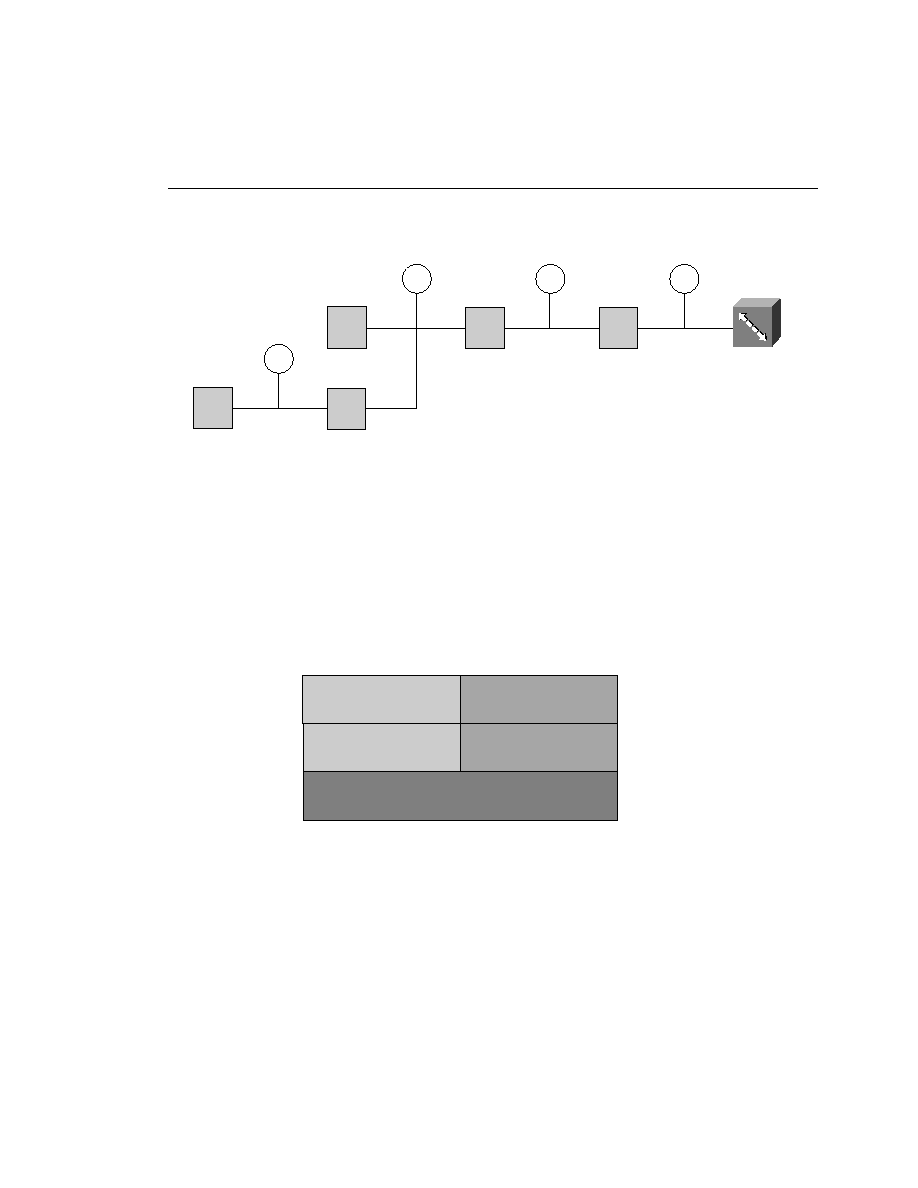
Basic Rate Interface 133
Figure 6-3
ISDN Interface Detail
BRI Protocols
As is the standard for implementations in this industry, the ISDN implementation is divided into
multiple layers. This division of labor for ISDN is not unlike the OSI model.
ISDN has three layers. Layer 1 deals with signal framing, Layer 2 deals with framing protocols,
and Layer 3 deals with D channel call setup and teardown protocols. Each of these protocols
has a specific mission to accomplish. Figure 6-4 depicts the ISDN layer model.
Figure 6-4
ISDN Protocol Layers
ISDN Layer 1
Layer 1 for ISDN is similar to that of the OSI model. It refers to physical connectivity. This
connectivity is obviously an important piece of the picture. Without it, nothing happens.
In order for a router to communicate with an ISDN network, it must be configured for the type
of switch to which it is connected. The carrier should provide the type of switch that is to be
used. If it was not previously documented, a call should be placed to the carrier to obtain the
information.
S
T
U
R
TE1
NT2
NT1
TE2
TA
ISDN switch
D channel
B channel
DSS1 (Q.931)
IP/IPX
LAPD (Q.921)
HDLC/PPP/FR/LAPB
I.430/I.431/ANSI T1.601
Layer 3
Layer 1
Layer 2
